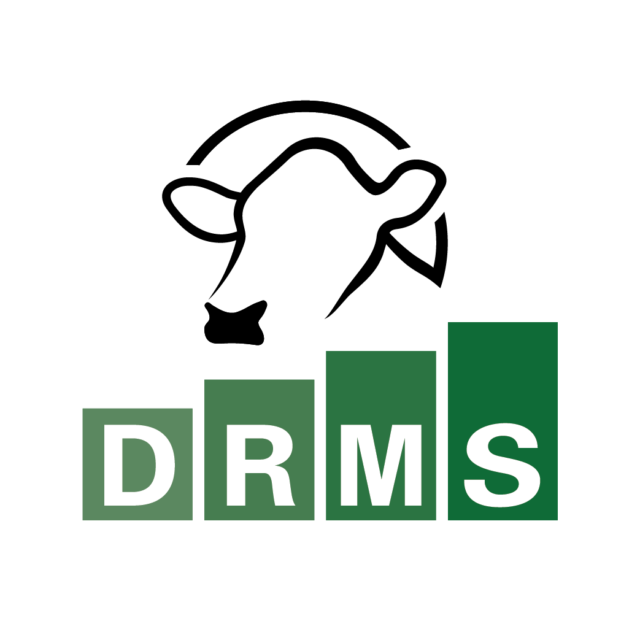Confronted with the realities of what happens if extension agents, advisers, nutritionists, veterinarians and salespeople can’t visit the farm, and because of social distancing, supply chains are challenged like never before. Now is the time to look again at technologies and how they might best fit from a performance and profitability perspective.
In ever-larger and more intensive milk production environments, with fewer people wanting to work on farms, management becomes a bigger challenge. A glaring gap for dairy management is data. Managers of farms, especially large ones, often don’t know how much an individual cow eats, drinks, or moves, her body temperature, how much stress she is under, whether she is subclinically sick, etc.
Even individual milk production isn’t always recorded in a consistent manner. How can farmers manage cow comfort, select the right cows for breeding and retaining, judge true profitability and raise the bar in terms of milk production? Without precise, real-time, smart data, individual monitoring and converting the data into a way that farmers can make decisions, the task is impossible. Enter digital technologies with the ability to fill that data gap.
1. Sensors
More than any other technological advances, sensors are beginning to fill the data gap in dairy farming, particularly when animals are outside in a field. Before the use of technology, monitoring an individual cow’s health was difficult, time-consuming and cost-intensive. However, the use of sensors and wearable technologies allows farmers to monitor individual cows. No longer do producers have to work from herd averages but are able to determine illness or lameness more effectively and react accordingly, quite possibly before milk production or the herd is affected.
Wearable sensors have proved to be vital in managing a cow’s health, and there is no shortage of companies producing this type of technology. There are many wearables worn on a cow’s ears, neck, legs or tail. Sensors also help monitor cow comfort and welfare. Sensors can detect a lack of locomotion and alert producers in order to circumvent these negative effects. Sensors can be used to detect disease signals that are otherwise hard for farmers to notice, such as mastitis.
Outside of wearables on cows, there are other examples of sensors in the dairy industry. Specifically, there are in-line milk sensors that measure milkfat, protein, somatic cell counts, progesterone and antibiotics at every milking. Sensors have challenges. They can be easy to break, fall off if pulled against a gate or headlock, be difficult to find when the battery dies and expensive to start using due to the hardware required to connect with them. Overall, sensors have been a game-changer on farms, but they require specific investments and management that can be challenging.
2. Artificial intelligence
Big data promises precision agriculture; however, if farmers can’t interpret the data and use it to take action, then the data is useless. Artificial intelligence can sort through data, highlighting those parts of actionable use to the farmer. It also allows producers to analyze the data sensors and other hardware technologies collect. It can provide an interpretation and solution by mimicking human decision-making and has the ability to completely transform how a dairy farm operates.
Companies, including ours, are developing algorithms that can monitor cow activity, feeding, drinking and cow movement. For example, using cameras stationed throughout the barn, software alerts farmers when feed is short or insufficient in the bunk, when feed has been delivered and cleared away. Future generations of the technology will be capable of delivering alerts of behavioral signs such as early signs of lameness. Eventually, “camera vision” may supplant the need for cows to wear any sort of tracking devices and eliminate the need for wearables altogether, particularly for animals raised indoors.
3. Robots
Robotic milking machines are probably the most well-known application for robots in the dairy industry, increasing efficiencies and replacing expensive or unavailable labor. Before robots, cows were typically milked twice a day because of labor and time constraints. Now, cows can be milked three times a day or more, greatly increasing production and profits. Robotic milkers clean udders, identify the cows’ teats and milk automatically. Other robotic milking technologies, such as the robotic milking rotary platform, allow farmers to maximize a herd’s milking performance while providing a comfortable and safe environment for both cows and operators.
These new milking technologies have allowed farmers to cut back on labor costs and get more milkings per day. And as cows are stationary for several minutes while milking robotically, there is added opportunity for medical and health assessments using transponders or sensors, which can not only analyze the speed, amount and quality of milk produced but also how much the cow has eaten, her heat cycle, etc.
Another possible use for robots include cleaning and sanitizing the barn, allowing for better biosecurity measures, which will lead to healthier conditions for the cows. There might also be a place for robots in the calving process. While this might not be as useful for an outdoor herd, there could be potential for robotic assistance for cows kept indoors.
4. 3-D printing
There are a multitude of applications for 3-D printing in the dairy industry. A primary application of 3-D printing is that of machine parts, which is of particular interest to rural farmers, saving valuable time and possibly money depending on the part needed. This is especially exciting when considering recent supply chain disruptions.
In some ways, 3-D printing is already challenging the dairy industry through 3-D printed foods. Cheese is one of the easier foods to duplicate through 3-D printing due to its easily changeable state from solid to liquid. Study findings suggest that printed cheese is less sticky, softer and has better meltability than non-printed cheese. The concept of printed food may not appeal to all consumers, the challenge being to produce food that offers an advantage, such as lower cost, improved taste or healthier nutritional content.
5. Augmented reality
Augmented reality can be defined as the integration of digital information with the user’s environment in real time. A recent report stated that sales for augmented reality is expected to rise from $2.4 billion in 2018 to $48.2 billion in 2025. Augmented reality can be used to allow producers an alternative way to monitor and evaluate cows. Augmented reality is being used to allow a farmer to immediately see stats relating to the farm through the use of specialized goggles. Information relating to each individual cow is overlaid through the glasses into the farmer’s field of vision.
He can see information on everything in the facility, even evaluating the quality of the milk. Could this technology not also be used in the veterinary field for inspection and observation? Perhaps if combined with reliable sensor data, the vet could be able to deliver appropriate recommendations for disease management and reduce the need for direct farm call visits, thus lowering costs.
6. Virtual reality
Virtual reality can be defined as an environment that can be interacted with in a seemingly real way through electronic equipment. Applications in the dairy industry vary from farm tours to veterinary training. The positive effects of increased safety and efficiency are possible. At least one global dairy cooperative has developed virtual reality health and safety training technology to allow employees to navigate its manufacturing and distribution sites without setting foot on the physical site, thus reducing onboarding times. These employees learn to identify potential hazards and experience hazardous situations in a realistic simulated environment, enhancing learning experiences without the risk of being in harm’s way. This technology also reduces labor costs by replacing a number of the hands-on health and safety training positions.
Also, virtual reality is being used to teach veterinary students the reproductive and rectal tracts of the cow, enabling them to practice fertility examinations such as pregnancy detection or determine reproductive concerns without putting them in a situation that can potentially be dangerous for both the cow and the student.
Virtual reality films of farms are also available, allowing viewers to scroll from side to side to view the entirety of the dairy barn in the film. These “farm tours” will allow consumers to better understand where their food comes from. There is much discussion about animal welfare, and giving consumers an opportunity to experience firsthand how a dairy farm operates could be a primary component to battle negative feelings toward the industry.
7. Blockchain
It is well-known that consumers are increasingly becoming interested in where their food comes from and how it is produced. Blockchain can connect all aspects of the supply chain from producer to consumer and allow for food traceability and safety. From an agriculture and food perspective, offering this type of information to consumers will put products ahead of the competition and, from a dairy industry standpoint, may not prove as challenging as other areas of agriculture, such as beef, which exchanges ownership more frequently.
8. Drones
There are opportunities for drones in the dairy industry, but they do often require additional technologies. Most simply, drones can be used to generally inspect the herd or fences or to aid in herding cows from fields to barns. The inclusion of other technologies creates greater opportunities. Visual sensors have proven to be instrumental in surveying land and measuring pasture growth. When combined with thermal imaging, the opportunities to locate and track cows increases dramatically, particularly in fields spotted with trees or dense foliage. Temperature detection would allow farmers to identify abnormal behavior in the cow, such as lameness, illness or calving. Drones may become more useful in these areas, particularly if battery life is prolonged and autonomous flying ability is improved.
Together, these eight technologies are creating opportunities within the dairy industry for increased efficiencies, profitability and production. The connectivity of these technologies is made possible through the Internet of Things (IoT).
Changes are happening so fast, the connected farm is likely to be the norm within the next 10 years. Capturing individual cow data and allowing farmers direct access not only to current but also historical data will allow farmers to bridge the data gap and improve dairy production. The winners will be those who embrace this disrupted digital dairy landscape. ![]()
Aidan Connolly is the CEO of Cainthus, an Ireland-based computer vision technology company, monitoring feeding events and cow behavior.

-
Aidan Connolly
- CEO
- Cainthus
Questions to ask
Here are questions producers need to ask before buying new technology for their dairy.
- What is the direct cost of the technology
(per animal)?
- What extra hardware costs will I need to invest in?
- What is the lifetime of the investment? (How soon do I need to invest in the next generation of tech?)
- How does the technology deliver information? Does it integrate with other data platforms?
- Does the company providing it also provide training, support, interpretation of their insights?
- Is the data functionally useful? Is it nice-to-know information or need-to-know information?
- Does the value of acting on the data exceed the cost of acquiring the data?
- Is the company a start-up? Or do they have the resources to survive and scale their business?
- Do the founders/employees understand agriculture? Specifically dairy?
- Who owns my data? Who has access to it?
Source: David Hunt,
Cainthus founder






